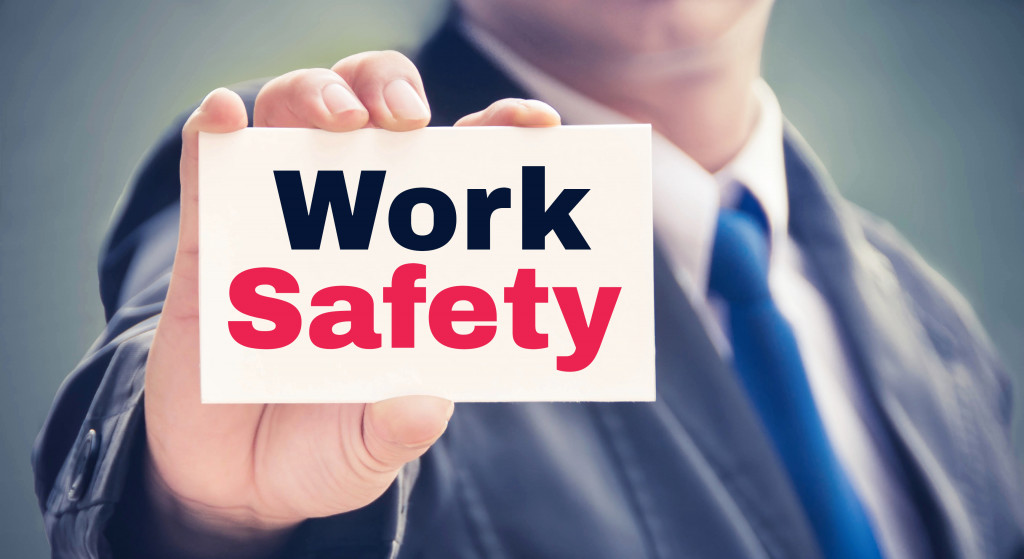- Establish clear safety procedures and develop a safety culture to protect employees and customers.
- Provide regular safety training and use appropriate protective gear for greater-risk tasks.
- Enforce rules & regulations, maintain regular inspections, and keep the area clean & orderly.
- Reduce risks in the workplace by recognizing safe behavior and addressing potential hazards immediately.
Business owners are responsible for ensuring the workplace is safe for their employees and customers. Safety can lead to severe injury or death and costly lawsuits and settlements when neglected. Safety should always be taken seriously in any business environment, regardless of industry.
A study by the Occupational Safety and Health Administration (OSHA) found that businesses incur an average of $3.5 million in direct costs for work-related injuries. In addition, indirect costs, such as lost productivity, can damage a company’s bottom line even more.
To minimize the risk of injury in the workplace, business owners must take steps to ensure safety is given priority. This guide will provide tips and best practices for making the office safer and reducing potential hazards.
Establish Clear Safety Procedures

Safety procedures are essential for protecting employees and customers while minimizing the financial cost to a business. Clear safety policies and procedures help ensure that risks in the workplace are identified, addressed, and managed appropriately. Business owners should ensure that all safety rules are clearly outlined in an employee handbook or company policy document.
Develop a Safety Culture
Creating a safety culture within an organization is one of the most crucial components of any safety plan. This involves instilling in employees the value of following safety practices. It’s important to recognize employees who follow safety protocols and provide rewards and incentives for those who consistently do so. Additionally, ensure everyone knows that safety is non-negotiable and punishments will be enforced if anyone fails to follow protocol.
Provide Safety Training
Businesses can reduce their risk by providing safety training to all employees regularly. In addition to basic information, such as adequately using equipment, these sessions should cover topics such as spotting potential hazards and knowing when and how to report them. It’s also essential for managers to reiterate the importance of following safety protocols during group meetings or one-on-one conversations with employees.
Use Appropriate Protective Gear
When working with sharp objects, hazardous materials, or certain types of machinery, business owners need to provide appropriate protective gear to their staff members. Depending on the task and associated risks, this could range from gloves and eye protection to full-body suits or respirators. In addition, employers must ensure that protective gear is regularly inspected to remain effective over time.
Enforce Rules & Regulations
It’s essential for business owners to consistently enforce all safety rules and regulations for them to be effective. This means setting clear expectations for behavior in the workplace with consequences attached if they’re not met. Establishing an anonymous system whereby employees can report unsafe conditions without fear of retribution can be especially beneficial in fostering a safe work environment where everyone takes responsibility for their actions.
Maintain Regular Inspections

Regular safety inspections help ensure that the workplace is safe and that employees work in an environment with minimal risks. Safety inspections can identify potential hazards and any issues that must be addressed. A qualified professional or personnel with the necessary experience and knowledge should conduct regular checks.
One crucial certification that should always be included in safety inspection is the Electrical Installation Condition Report (EICR) certificate. This test helps determine if electrical systems meet safety standards, such as equipment certification and wiring integrity. It also checks for signs of deterioration, defective parts, incorrect connections, or other issues that could lead to system failure or even a fire.
Other tests like Radon Testing can also be conducted depending on the business needs. Radon testing will help detect levels of this harmful gas in the air, which could lead to health problems for employees if left unaddressed. Additionally, businesses may consider conducting noise level tests to ensure employees are not exposed to hazardous sound levels on the job.
Keep the Area Clean
An underrated safety factor in the workplace is keeping it clean and orderly. Clutter can obscure safety hazards such as exposed wires or slippery surfaces, which could lead to accidents or injuries. Business owners should also ensure adequate lighting levels throughout the area to prevent falls and other issues caused by poor visibility. Finally, eliminate unnecessary items from the workspace whenever possible to reduce tripping hazards and make it easier for employees to move around freely.
Final Thoughts
By following these tips and best practices, business owners can help create a safe work environment where everyone remains productive without putting themselves at risk of injury or harm. Safety should always be taken seriously in any business setting, so implement these steps today!

